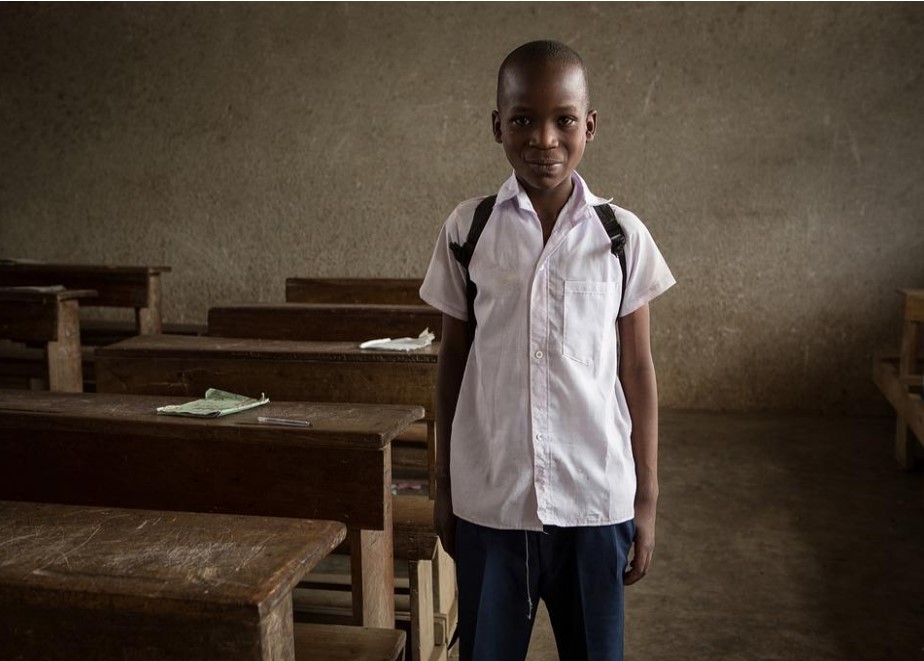I believe, with Diana Paxson, that “dreams have the power to make what the heart desires come true.” I, for example, fervently hope that poverty and its faithful ally, ignorance, disappear from the face of the earth. It sounds utopian, but putting the dots together, feasible solutions could be outlined for application if some of the technology visionaries contributed their emotion to a great universal education program. Let's dream, then.
Where the World Goes
Worldwide, more than 706.000.000 people live in extreme poverty and over 630.960.000 of them live in rural areas. (/worldpoverty.io) As a result of global poverty and marginality, more than 72 million children around the world do not go to school and 773 million adults and young people, according to UNESCO, do not read or write.
As a result of the Pandemic, the use of virtual educational technologies increased substantially. From US$18.66 billion invested in 2019, global investments in education are expected to reach $350 billion by 2025. (www.weforum.org)
Given the existence of an enormous rural mass of people without access to education and of more than 1.200 million children in 186 countries affected by the closure of schools, it is necessary to combine the efforts of various stellar actors from the business universe that could have in their hands effective and mediate solutions.
Education for all.
In order for a resident of a marginal area to have access to distance education, they must meet, at least, the following basic requirements:
- Have access to the Internet
- Enjoy electric power.
- Possess the appropriate computer equipment.
- Have a suitable operating system.
- Access academic programs online.
Starlink is a dream come true for its creator, Elon Musk, who devised a satellite system to bring quality Internet to the most remote regions of the world. Starlink will soon “throw into the ring” providing service to several isolated rural Chilean communities with connectivity problems.
1. Internet access
The places chosen for these experiments are Caleta Sierra, a small town with 170 inhabitants located 400 km north of Santiago, and Sotomó, a town with a hundred inhabitants 950 km south of the capital, where it can only be accessed by waterway. If these tests show positive results, many marginalized communities around the world will want to enjoy this innovative service.
2. Electrical Energy
Solar energy technology is becoming an increasingly cost-competitive alternative to fossil fuels. Since the sun shines for everyone, the feasibility of enjoying solar energy is now accessible to many regions far from electricity grids. Currently solar panels can be easily installed in isolated units and operate with complete autonomy from the networks.
The United States has been improving its position as the world leader, after China, in solar energy production. The solar photovoltaic energy market in the United States grew 43%, reaching a record of 19,2 GW of new capacity, according to the Solar Power report Industries Association (SEIA) and Wood Mackenzie.
Regarding the global influence of the US in the development of the solar energy sector, it can be seen that the US government, through USAID, has developed important initiatives in various countries. The USAID.gov/powerafricasolar program alone has developed generation projects for 2,367 MW and the UNDP through the Global Environment Facility (GEF) has installed over 9.000 solar power systems in Zimbabwe.
The River Estate, 70 kilometers from the Zimbabwean capital, Harare, boasts one of the best known solar village models. New lighting systems have improved the quality of life in the community, extended study hours for schoolchildren, and reduced migration to urban areas. (un.org/africarenewal/magazine/october-2006/solar-power-cheap-energy-source-africa)
3. Computer Equipment
In 2018, the amount of electronic waste produced globally grew to around 49,8 million tons and, if this pace continues, it could reach 120 million tons by 2050. (computerdisposals.com)
Electronic waste is dangerously toxic because it contains harmful elements such as lead, mercury, cadmium, phosphorus, beryllium, selenium and arsenic that are highly polluting. The elimination of this waste constitutes a priority environmental challenge.
The delicate situation of electronic waste management would be mitigated by prioritizing the processes of renewing computers over their disincorporation. Unlike recycling, in which computers are rendered unusable, refurbishment extends the useful life of donated equipment.
While the lifespan of the typical computer ranges between two and five years, many are discarded before the end of their useful life due to minor software or hardware problems or simply due to the advertising seduction that incites users towards more models. attractive. Every year in the US, millions of computers and peripherals that are in good condition or that can be effectively restored are discarded.
Computer Refurbishing takes donated equipment, reconditions it, and makes it fit for use by people who might not otherwise be able to enter the digital world. These functions can be perfectly executed in the recipient countries of the cooperation where the technicians would be trained and the facilities would be installed with the appropriate equipment for the restoration process.
To massify the collection, packaging and distribution system of used equipment, it is important to incorporate the most efficient logistics companies in the country: DHL, FEDEX, UPS, Amazon Global, and USPS.
4 OS
The operating system is the base program that, when installed on the computer, allows the user to manage all other programs. A computer cannot function if it does not have an operating system built into its processor. Free and open source software presents a free alternative to Microsoft Windows and Office. Linux is the most used free software version for the following reasons:
- Is free.
- Works on older computers.
- Linux distributions like Ubuntu offer more than 10.000 free applications.
- It lacks activation and other restrictive anti-piracy technologies that hamper equipment renovation work.
In our model, the incorporation of the operating system to the equipment is the procedure that follows the process of renewing or restoring computers.
5. Content
Distance education is an option that allows any student, regardless of their social or economic situation, to access the most reputable educational centers in the world. This provides equal opportunities for interested persons to have free access to all educational levels from preschool, primary, high school, and technical and higher education.
With the Pandemic, the integration of information technology in education has become more sophisticated and it has been shown that online education has become a permanent component of formal education. From this process, potential students in many marginal areas of the planet have become front-line beneficiaries of the new model.
There are many educational institutions that at the most varied levels of human knowledge have been incorporated into virtual education. In the table that is attached to this writing we present a compilation of the most outstanding free distance education institutions.
The Dream Team
Having defined the basic needs to implement a free online education system, it would now be time for the imaginary task of bringing together the star protagonists of this great work. So let's do an exercise in which, by virtue of a magic wand, we achieve the acquiescence and support for the project of the following five characters:
- Elon Musk, Linksys factotum, to coordinate the implementation of the satellite Internet access system.
- Lukas Walton, founder of First Solar, a leading US solar technology company and global supplier of eco-efficient solar modules, to coordinate the implementation of the solar energy system.
- Jeff Bezos, of Amazon, to coordinate the logistics system that would receive donations of electronic equipment and transport them to their final destination.
- Larry Ellison, leader of Oracle Linux, to coordinate the installation program of the open operating system on the computers.
- Daphne Koller, founder of Coursera, the company that offers over 7000 online courses to more than 87 million people, to coordinate the supply of content that would nourish the system.
Imagine what would happen if this dream, or another similar one, worked in real life. Millions of people would have access to the most important academic fields in the world for the first time, and countless professionals and technicians would join the workforce in highly qualified areas. Likewise, the standards of living in many regions marginalized from progress would be substantially improved.
In short, we would agree with the great Nelson Mandela that “education is the most powerful weapon to change the world.”
___________________________________________________
Author: Alfredo González (Alfred@negociosenflorida.com)
Image courtesy of Pixabay.




